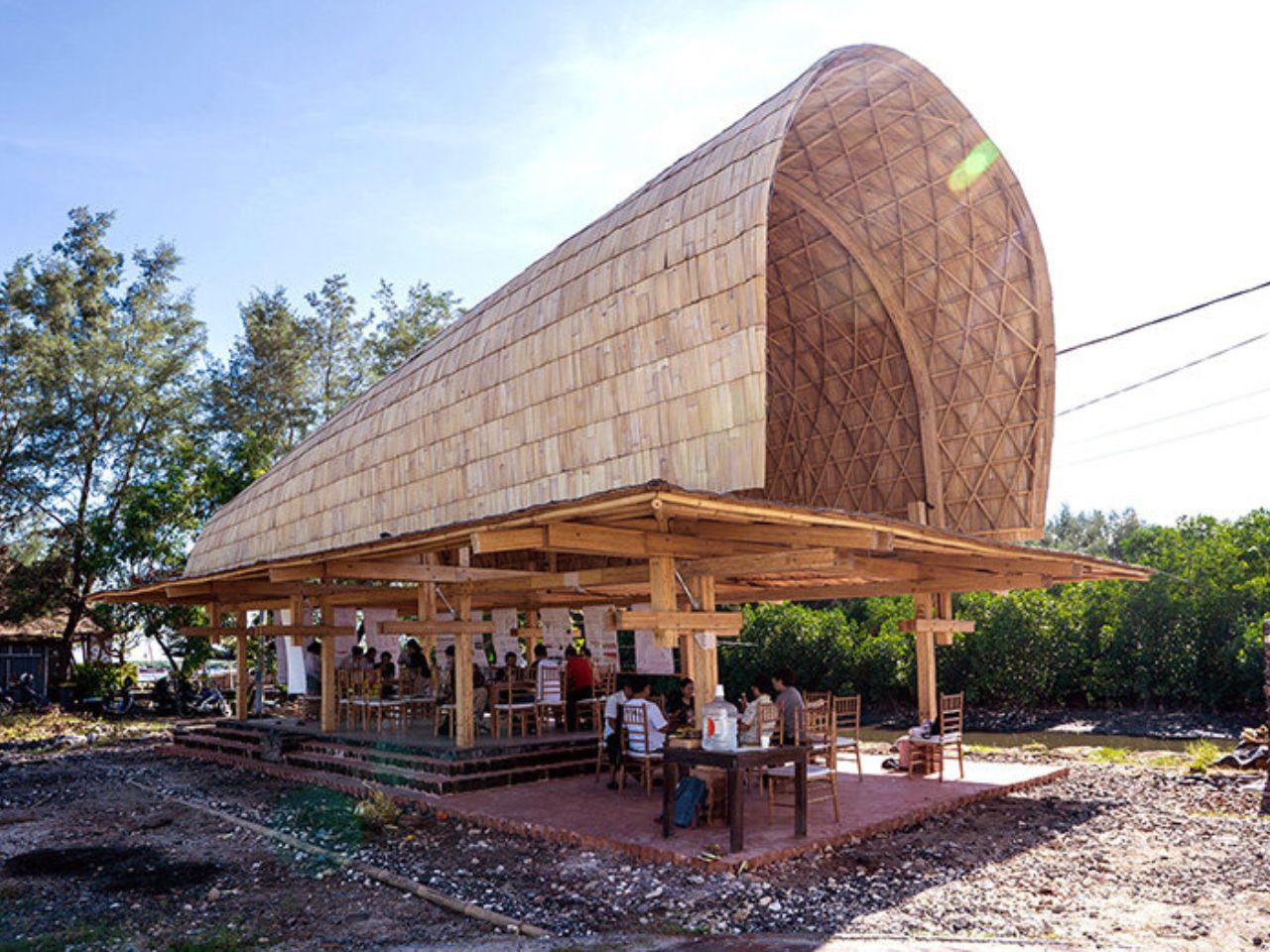BaleBio, a bamboo pavilion designed by Cave Urban for Bauhaus Earth’s ReBuilt initiative, pioneers a new paradigm of carbon-negative architecture in Bali. Rising gracefully above the sands of Mertasari Beach in Denpasar, the 84-square-meter structure transforms what was once a disused car park into a vibrant communal hub, an open meeting space that merges ecological innovation with social purpose.
In a landscape where coastal development is often driven by tourism and concrete infrastructure, BaleBio offers an alternate vision: a prototype for buildings that store carbon rather than emit it. Drawing inspiration from the Bale Banjar, the traditional Balinese village hall central to community life, the design reinterprets this open and inclusive layout through a contemporary lens of sustainability. It preserves the spirit of collective gathering while integrating the principles of environmental stewardship, positioning itself as both a cultural reinterpretation and a climate-responsive model.
Designer: Cave Urban and Bauhaus Earth
The pavilion’s sweeping barrel-vaulted roof, rising 8.5 meters above the beach, serves as both a visual statement and a functional marvel. Crafted from slender bamboo rafters and clad in pelupuh (flattened bamboo), the canopy promotes natural ventilation and passive cooling. Below this organic form lies a structural frame of laminated petung bamboo, locally sourced, resin-bonded, and compressed to deliver the strength and precision of steel or timber, yet without their heavy carbon cost.
Every element of BaleBio was grown, processed, and assembled within Indonesia, ensuring a circular, local supply chain that minimizes transportation emissions. Traditional joinery techniques blend seamlessly with precision-engineered fittings, while locally sourced volcanic rock, lime plaster, and repurposed terracotta tiles add thermal mass and textural warmth. Together, these materials form a coherent system that fuses bio-based, geo-based, and reused resources into one holistic construction.
A life cycle assessment by Eco Mantra verified BaleBio as carbon-negative from cradle to completion, documenting a 110% reduction in embodied carbon compared to conventional builds. The pavilion saves more than 53 tonnes of CO₂ emissions, the equivalent of planting over 2,400 trees. In measurable terms, its carbon balance stands at –5,907 kilograms of CO₂ equivalent, against a baseline of nearly 60,000 kg, an achievement that moves the project beyond symbolism into empirical proof.
Since its completion, BaleBio has evolved into a gathering space for residents, students, and travelers, reactivating civic participation through design. Its creation involved collaboration with Warmadewa University, local artisans, and community organizations, ensuring it remains grounded in Balinese cultural rhythms even as it experiments with global standards of circular construction.
In 2025, BaleBio’s achievements in material innovation, carbon performance, and social engagement earned it three major honors: the Australian Good Design Award for Social Impact, a commendation from the Built by Nature Prize, and Gold at the German Design Award in the Circular Design and Fair & Exhibition categories.
As part of Bauhaus Earth’s ReBuilt initiative, BaleBio is not merely a pavilion; it is a blueprint for systemic change. It demonstrates that architecture can regenerate rather than deplete, that communities can thrive in structures born of their own landscapes, and that good design in the age of climate urgency must be measured not only by form and function but by its contribution to the planet’s recovery.
The post This Bamboo Pavilion Turns a Beach Car Park Into a Carbon-Negative Community Hub first appeared on Yanko Design.

